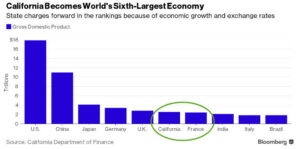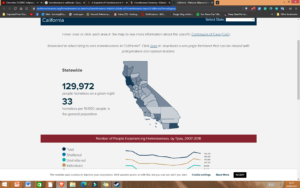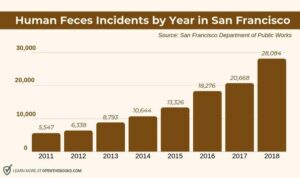Donald Trump, his campaign, his election and his likely re-election have confirmed that immigration is quite possibly the single biggest issue of our time.
Despite the allegations of racism that are often thrown at Trump and his allies, he remains relatively popular with ethnic minorities in America, proving that the immigration issue is not a race issue.
 The economic costs of immigration
The economic costs of immigration
The results of large levels of immigration or migrant workers are limited job security and compression of wages, while raising the cost of living.
In addition, in 2019 the World Bank reported that migrant workers sent back $554bn back to their home country as remittances instead of spending it in the host economy. Under normal circumstances, as people become unemployed, the cost of living should decrease, but as migration into certain areas continues to rise, the prices of property do too.
In other words, persistently high levels of immigration will effectively create a shadow depression and are unsustainable.
Social

The economic cost of high immigration also impacts the social structure, because unemployment can often lead to mental health problems, substance abuse and high levels of crime.
It is not fair to blame all social problems on immigration or immigrants, but the long-term effects of mass immigration are undeniable. Using California as a case study can illustrate some of the problems with mass immigration. California is undeniably a wealthy state, with an economy the size of a Western nation.
One of the reasons why this economy has become so large is because it is able to exploit migrant workers, who often lack the ability to form unions. However, the long-term effects of this are negative. Increased competition for work has led to unemployment and raised the cost of living, which has led to problems such as extreme levels of homelessness, drug use and mental illness, which has also led to bizarre problems emerging such as mass public defecation. There were 28,000 reports of human faeces in San Francisco in 2018.

Ironically, the cost of mass immigration is mass emigration or, as it is referred to in California, CALEXIT. According to Ballotpedia, 38 million people live in California, which is about the size of Sweden. The reasons cited for the exodus are the cost of living, including housing. 691,000 have left, whereas 501,000 came in – and this is only domestic migration. Reference. High levels of immigration into California have contributed to a housing crisis which is causing people to leave the state.
So, in other words, the cost of immigration – or at least mass immigration – is a cost of living increase and an unemployment spike, which leads to homelessness.
This is why residents who live in areas that have experienced high influxes of people are either leaving, voting for Trump or voting for other politicians who support border controls.



